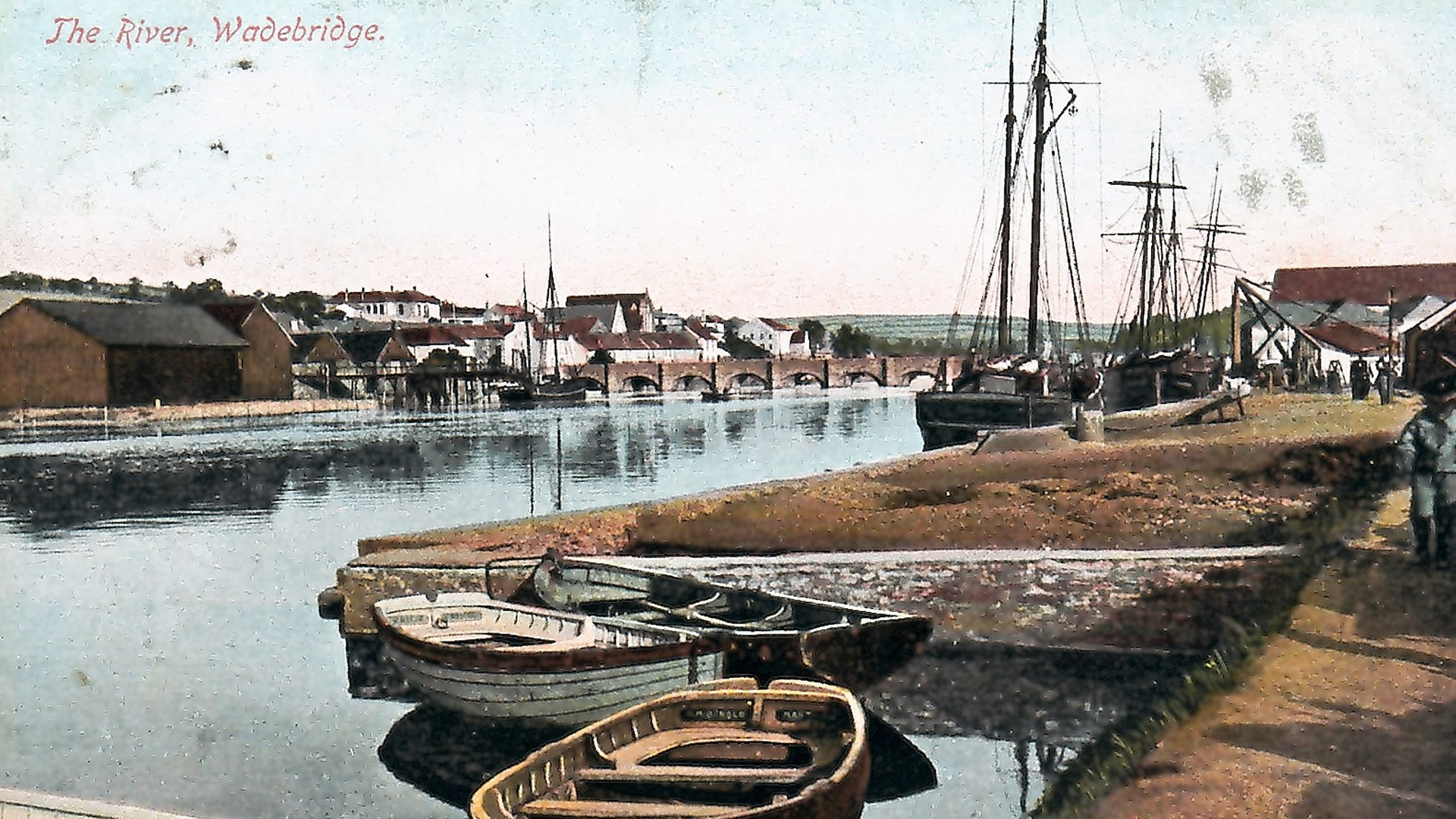WADEBRIDGE -
AN INLAND PORT
WADEBRIDGE - AN INLAND PORT
Today it is hard to imagine the Wadebridge of years ago when it was not only a busy market town but an equally busy port with barges plying their trade along the Camel and larger vessels sailing along the coast to Swansea, Cardiff, Liverpool, Bristol, Glasgow and London among other ports. Some locally registered vessels crossed the ocean to North America and beyond. The River Camel played a vital role, being navigable for small cargo ships as far as Wadebridge and for barges many miles further inland.

There are few records for the early days, but much useful information can be found in reports of a court case. The Prideaux Brune family of Padstow claimed the right to collect dues from vessels using Padstow and also other landing places along the Camel, but Adam Thomson, a Lostwithiel merchant, felt this to be unjust and brought a case before the Court of the Queen's Bench at the Guildhall in London on 15th December 1841, with a subsequent hearing at the Lent Assizes at Bodmin on 24th March 1842. The final result went in favour of the Prideaux Brunes. From the many witnesses called, a picture can be drawn of the trade passing through the port of Padstow and from the small quays along the river.
The witness accounts make clear that very considerable quantities of corn were shipped from every quay on both sides of the river, including Wadebridge, Rock, Porthilly and St Issey Bar. William Norway had a cellar and warehouse at Gentle Jane with a quay from which shipments of grain were made. He also owned a quay on the east side of the river near the Bridge. John Wills, a corn factor, said that he shipped corn from between twelve to thirteen places along the Camel including Gentle Jane, Porthilly, Dinham Cove, Polgammon, Penqueen Quay and from Tregunna Kiln for grain from St Breock. He also said that he used three quays in Wadebridge: Town Quay, Williams' Quay and Norway's Quay, all of which were on the northeast side. If unable to ship all his cargo from Wadebridge he would complete at Gentle Jane where farmers brought their grain, paying Norway for the use of the quay. He thought that he had shipped between 7,000 to 10,000 quarters of wheat and barley each year from various places along the river.
It was not only agricultural products that were shipped along the Camel. Between 1806 and 1817, 80 tons of copper ore were received and discharged. During 1807 other commodities passed through the port including corn, cider, coal, malt, ragstones and slate. The owners of Pentire Mine loaded copper ore at Rock and Padstow. Ore from other mines further up the Camel, such as Treburgett, a major producer of lead, was brought down the river by barge.
With the coming of the Railway in 1834, the barge trade lost custom. Mines near Bodmin, such as Lanivet Consols, sent iron, copper and tin to Wadebridge by train for onward shipment.
In addition, the river was the route for the arrival of imports and goods from elsewhere in the UK, mainly timber and coal, but also limestone, brick, salt and general merchandise. Considerable quantities of iron were brought in, particularly during the construction of the Railway.